Ultimate Knitting Guide for Beginners
Knitting is a pastime which has been enjoyed for hundreds of years, and with good reasons. Knitting not only allows you to make some wonderful garments and household decorative items, but it also allows you to create while you relax as well. In this day, home made knitted items can be a source of revenue as well, if you sell on sites like etsy.com(link to article about how to sell on etsy)
Knitting gives you an amazing sense of accomplishment when you have completed a project. Whether you are making a sweater or a scarf, you will be proud to show off your work when you have finished it. Not to mention the great sense of pride when you see your friends sharing pictures of their babies wrapped in the blanket you made them, knowing they will treasure that item for a lifetime.
Being new to knitting, there are a few things you need to keep in mind so you can find the most enjoyment in this great hobby.
Knitting Essentials
![knitting needles]() Knitting Needles
Knitting Needles
Not all knitting needles created equal. By far, the easiest needles to knit on are made from wood. Wooden knitting needles allow you to knit much easier because your yarn will stay in place on them. When you use plastic or metal knitting needles you will soon find that your yarns want to slide off the needles if you are not careful in handling them. When you are new to knitting it really is best to stick to wooden needles.
If you cannot find wooden knitting needles in your area, you can take a dowel of wood and cut it to be about a foot long, sharpen the end with a pencil sharpener to a blunt point, and then rub a bit of candle wax on it. This makes a great pair of inexpensive and custom knitting needles.
When you are a beginner at knitting you should create your first project with large needles for a couple different reasons. The first reason is that the large needles are easier to work with and allow you to see your mistakes much easier. When you drop a stitch, and at first you will drop some stitches, you will immediately know it and can rip out and start again fairly easily. The second reason is that large knitting needles make your projects much quicker to do. You can very easily finish a scarf on large knitting needles in only a couple days. This sense of accomplishment is great for newbies, as once you see a finished project it helps drive the love for creating another project.
![]() Yarns and Fibers
Yarns and Fibers
When you are new to knitting you will want to start out with natural fibers such as cotton or wool. The reason you want to stick to the natural fibers is because they will not slide off of your knitting needles quite as easily as synthetic fibers will. A synthetic fiber on a plastic or metal knitting needle will slide around like everything is greased. While all those fancy yarns look inviting, they can be a challenge to work with if you are new to knitting. It is best to start off simple and move you way up.
Then you purchase yarn or fibers for your projects make sure you take the time to get all of it from the same dye lot, more on why later.
Check out these FREE knitting patterns
Knit With Others
If you are new to knitting, or a seasoned pro, a knitting group might be just what you have been looking for. Joining a knitting group can offer you help with a new pattern, help completing a lingering project, new knitting project ideas, and the ability to make new friends with a very similar interest to yours.
You may have investigated the idea of getting some classes to help with your knitting and found that the cost is too high for your budget, or there are no class times which work for your busy schedule. A great alternative to the structure and cost of knitting lessons are knitting groups.
Knitting groups are simply a collective of people who get together to knit and teach each other things about knitting. Whether you have never knit anything or if you have a bunch of successful projects under your belt, you can benefit from a knitting group.
Here are four of the top benefits of a knitting group:
Benefit #1 – Learn New Patterns from People Not Books – Have you ever read a knitting pattern and went “huh?” Most everyone who knits does that at some point. The abbreviations get the best of us and we have no idea what a pattern is talking about, let alone try to knit it.
When you are a member of a knitting group, you can bring your patterns and knitting projects along with you to the meetings, and get help and advice from others who understand the techniques better than you do. Learning something like knitting is always better when you learn from another person rather than to try and learn it yourself from a book.
Benefit #2 – Help and Motivation to Finish Your Lingering Projects – Nearly every knitter, at some point, finds that they have an unfinished project which they are either stuck on, or that they have become bored with and abandoned. Knitting groups are great for finding help to finish up the project yourself, or for getting a volunteer who will happily finish it for you. Sometimes, even the act of showing your half-finished projects to other people can prod you along and get you finishing them up.
Benefit #3 – Make Friends Who Knit – One of the best advantages to a knitting group is that you will make new friends who also love to knit. While knitting is generally thought of as being a pretty solitary art, getting together allows you to learn from each other and also to simply make friends. At group meetings you can swap ideas and you can even make-up fun contests or community service projects. Your knitting group is truly what you make it. So, get involved in a group and help to improve it!
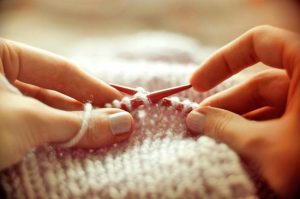 Benefit #4 – Get Ideas for Your Next Projects – It happens to even the best knitters, they run out of ideas for their next project. Sometimes you can look through a ton of knitting resources and nothing screams “make me” to you. When you are an active participant in a knitting group, you can see what everyone else around you is making and that can spark something in you. You might love the new yarn that someone is using and think of something you could make with it, or you might love a new technique and have just the right yarn at home to try it out.
Benefit #4 – Get Ideas for Your Next Projects – It happens to even the best knitters, they run out of ideas for their next project. Sometimes you can look through a ton of knitting resources and nothing screams “make me” to you. When you are an active participant in a knitting group, you can see what everyone else around you is making and that can spark something in you. You might love the new yarn that someone is using and think of something you could make with it, or you might love a new technique and have just the right yarn at home to try it out.
No matter what your motivation is, there is a great knitting group in your area just waiting for you to join. There really isn’t any reason for you to struggle with your projects or making new friends when you can attend knitting groups and accomplish both goals at once. If you happen to live in an area where there is not an existing knitting group, maybe you should start one for yourself.
The Top 7 Knitting Yarn Questions Answered
One of the most essential choices you have to make when knitting is precisely what kind of yarn you choose for projects. The yarn you select has everything to do with precisely how your completed project looks and stands up to time and wear. The very last thing you will want to do is waste hours creating an item simply to have it fall apart in the wash, or possibly appear worn-out after the second wearing. Spending some time to select the ideal yarn will help make your knitting projects successful.
Listed here are the answers to the top 7 knitting yarn concerns:
1) How can I get familiar with all of the various yarns? The best place to learn about yarn is by simply reading and comparing labels. Yarn labels contain such details as the manufacturer, the fiber content of the yarn, the color name and number, the dye lot number, the amount of piles or strands, the weight category of the yarn, the knitting and crochet gauge, washing instructions, as well as the length of the yarn itself. By looking at the labels and comparing them to each other, it is easy to find out all you need to know about yarn.
2) Why do I care about yarn weight category? The term “yarn weight classification” does not refer to the real physical weight of the yarn, as you may have possibly assumed it would. Instead, the yarn weight classification refers to the diameter of the yarn strand. The smaller the strand, the smaller the weight, and vice versa…
3) Can I work with a completely different yarn type than my pattern calls for? Typically, the answer is yes. You should knit a test swatch to make sure your gauge is right before knitting the complete project though.
4) What exactly is yarn gauge? Gauge is the number of stitches and rows in every inch of knitting. Gauge is specified on designs to assure that the end project is true to dimensions. Due to the fact that everybody knits in a different way, it is very important to create a test swatch with your current project needles and yarn to test to make sure your gauge matches that of the pattern you are working with. Gauge is particularly crucial when working with clothing.
5) Could I substitute one yarn weight for a different one? Generally speaking, the answer is no. Mainly because your yarn weight has a lot to do with the completed size and look of a project, by making use of a yarn of a different weight you risk your project coming out the incorrect dimensions. Normally you should not substitute yarn weights unless you are making something such as a blanket or scarf where it will not make a difference as much and you can simply adjust your project for the difference in size.
6) Exactly what is a dye lot and why is it that some yarns have one while others do not? Dye lot numbers refer to the batch a skein of yarn was in when it was dyed at the manufacturing facility. Due to the fact that dying is not an exact science, the exact same color yarn, from different dye lots, might look like two different tints. This is why you should always buy enough yarn to complete your project all from the same dye lot whenever possible.
Some yarns and fibers do not list a dye lot number due to the fact the fibers are dyed first and then the yarns are made. This simply means there are no dye lots available for the yarn.
7) How can I care for my knitted products? The simplest way to understand how to take care of a knitted fabric is to check the laundering directions on the yarn label. Usually you should hand wash each one of your hand knitted pieces in a gentle laundry detergent after which dry them flat. Should you not have a yarn label, it is possible to occasionally find similar yarn at your neighborhood craft store and read that yarn’s label for care instructions.
Knitting Yarn Selection Tips and Tricks
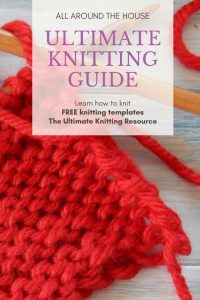 Most everyone who knits appreciates all of the variation in the yarns and fibers available on the market today. Even in a large store like Wal-Mart, you can discover many different kinds of yarns. As you move to craft stores and knitting shops your yarn selection options go through the roof. At these specialty shops you can find yarns made of some of the most exotic fibers such as alpaca and cashmere. For a knitter, browsing through all the options in a store which carries yarn can take hours and is a very enjoyable pastime.
Most everyone who knits appreciates all of the variation in the yarns and fibers available on the market today. Even in a large store like Wal-Mart, you can discover many different kinds of yarns. As you move to craft stores and knitting shops your yarn selection options go through the roof. At these specialty shops you can find yarns made of some of the most exotic fibers such as alpaca and cashmere. For a knitter, browsing through all the options in a store which carries yarn can take hours and is a very enjoyable pastime.
Yarn selection for your knitting projects is a much more complicated process than simply selecting a color which appeals to you. While yarn color clearly matters, the most important thing about the yarn you select is that it matches your project and that it is the highest quality available in your price range. The product you end up with is a direct result of the yarn you choose; if you choose quality you will have a quality end product, if you choose a lesser yarn it will show in the quality of your finished work.
If your knitting pattern calls for a very lightweight smaller yarn and you use a larger chunky yarn, then you can count on your end project being a very different size than the pattern states. While this is easy to adjust for in the case of scarves and blankets, it is not as easy when you are making things like socks, hats, and sweaters. It is important to keep this in mind when you are selecting your yarn.
Some of the highest quality yarns available are made from natural fibers from animals and plants. These yarns are: cottons, alpaca, mohair, cashmere, and wools. Each yarn has a different feel and thickness that should be considered when you are deciding how you want your finished project to turn out.
Another consideration when you are choosing a yarn is how it can be cleaned. If you are making a baby blanket or baby garment, then you will want to insure that it can be machine washed and possibly dried. Dry cleaning just won’t do in the case of items for babies; they need to be able to be machine washed.
When you are looking at yarn for a particular pattern, make sure that you understand the fiber content and structure as well as the gauge of the suggested yarn. If you are going to substitute another yarn it is important to match the fiber content, structure and the gauge of the new yarn to the one suggested in the pattern. If you do not do this, then your end project will not come out as you expected.
While no one particularly loves knitting a swatch to check for gauge, it is vital when you are looking at substituting a different yarn for a pattern. This quick check will show you if your gauge is correct for the pattern or if you will need to switch needles or adjust your tension.
As you can see, yarn and fiber selection is very important for all knitters to consider. If you choose the wrong yarn for your project it will be blatantly obvious in your finished project. However, if you choose the correct yarn, your project will be as fabulous as you set out to make it. By always using a high quality yarn you can assure that you end up with high quality finished projects.
Hopefully you find this guide for knitting beginners helpful, what are some of the suggestions you have for beginners?


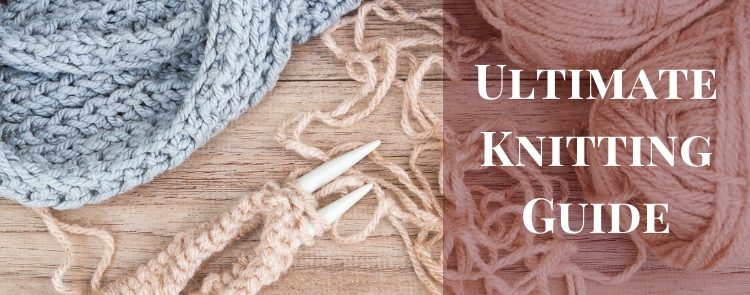
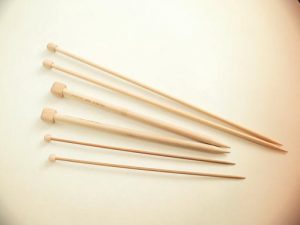 Knitting Needles
Knitting Needles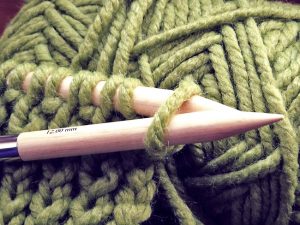 Yarns and Fibers
Yarns and Fibers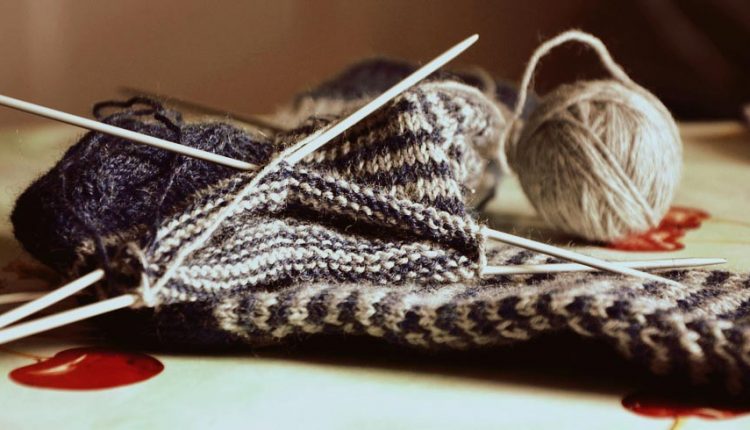
Comments are closed, but trackbacks and pingbacks are open.